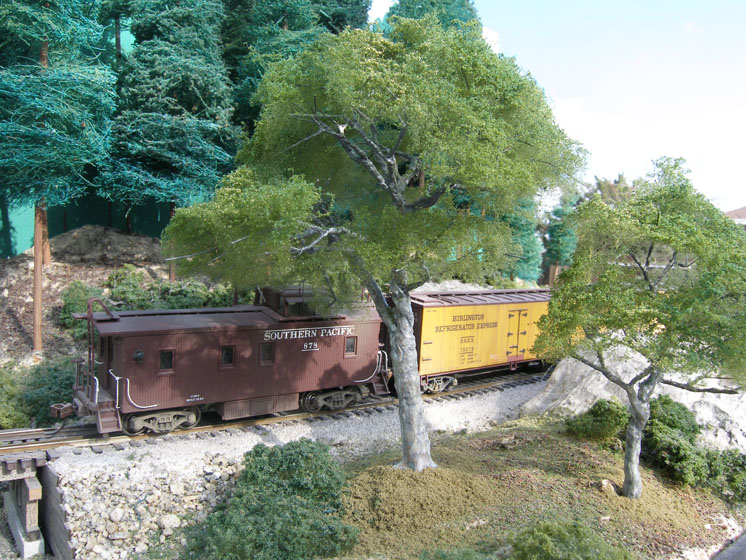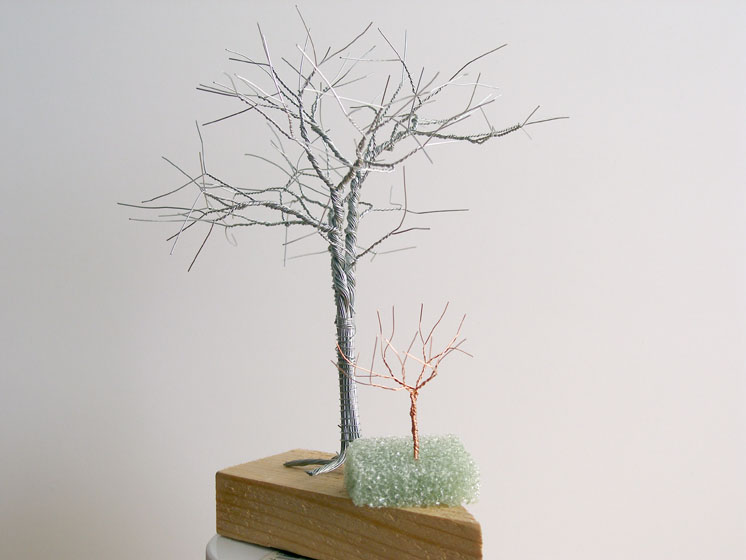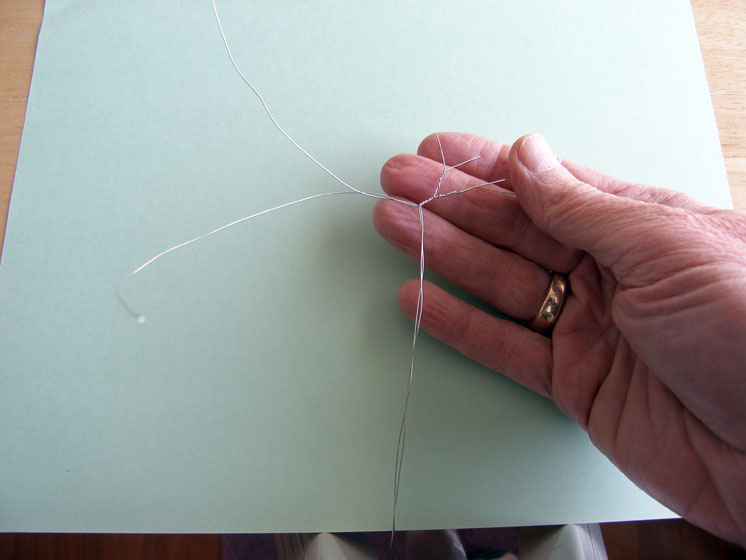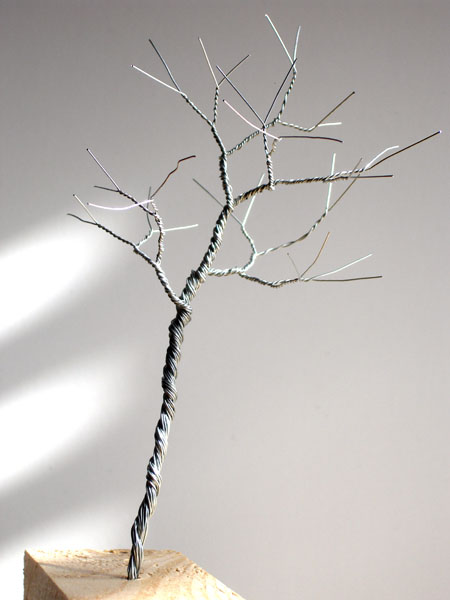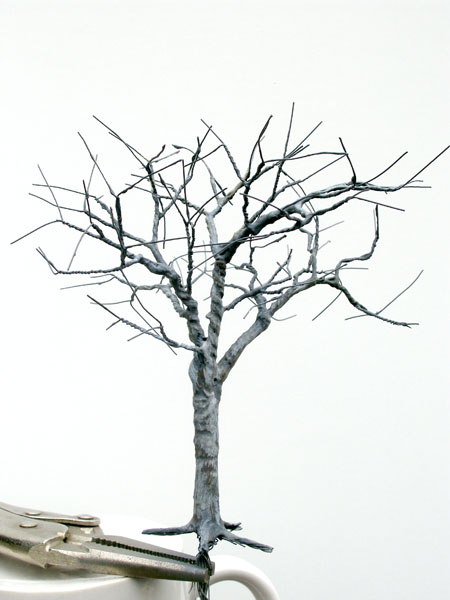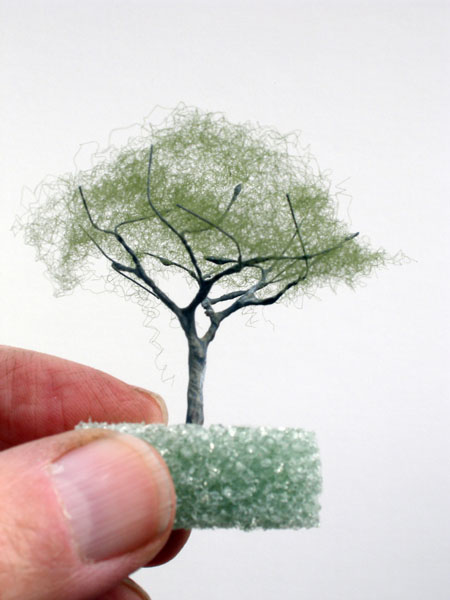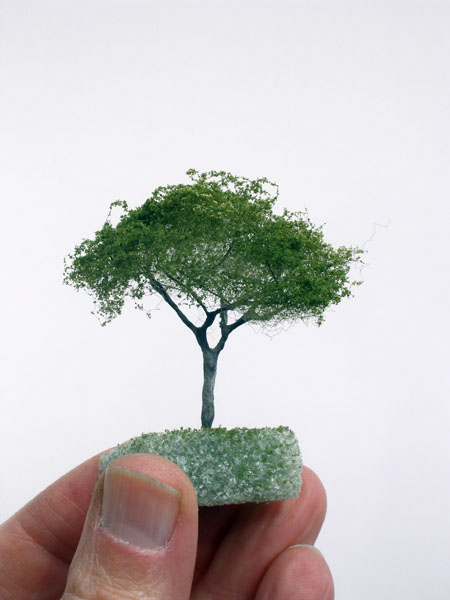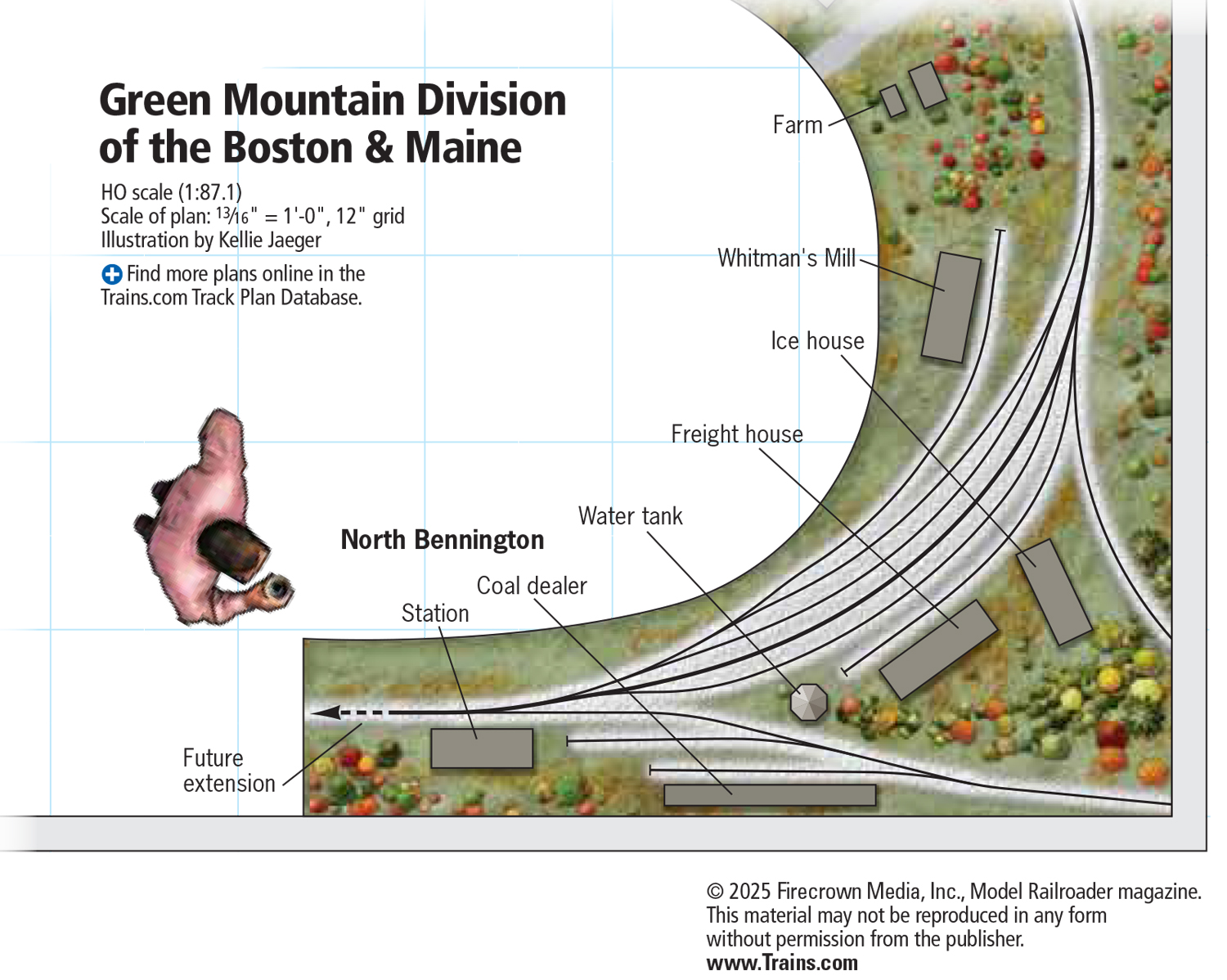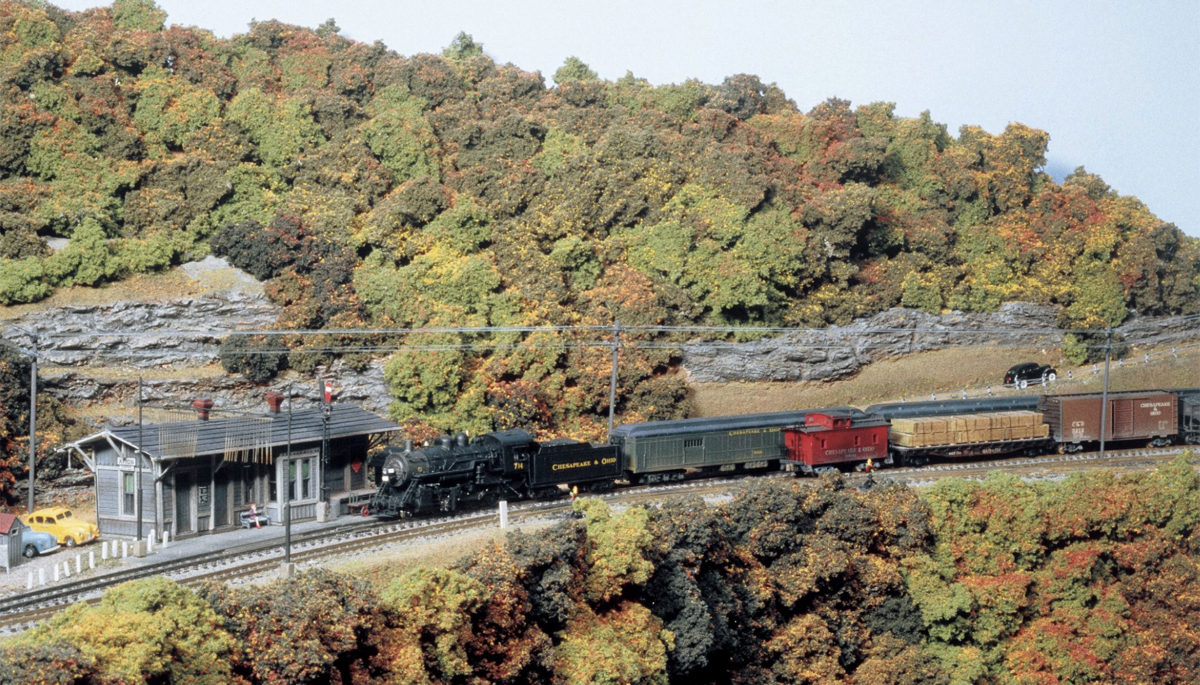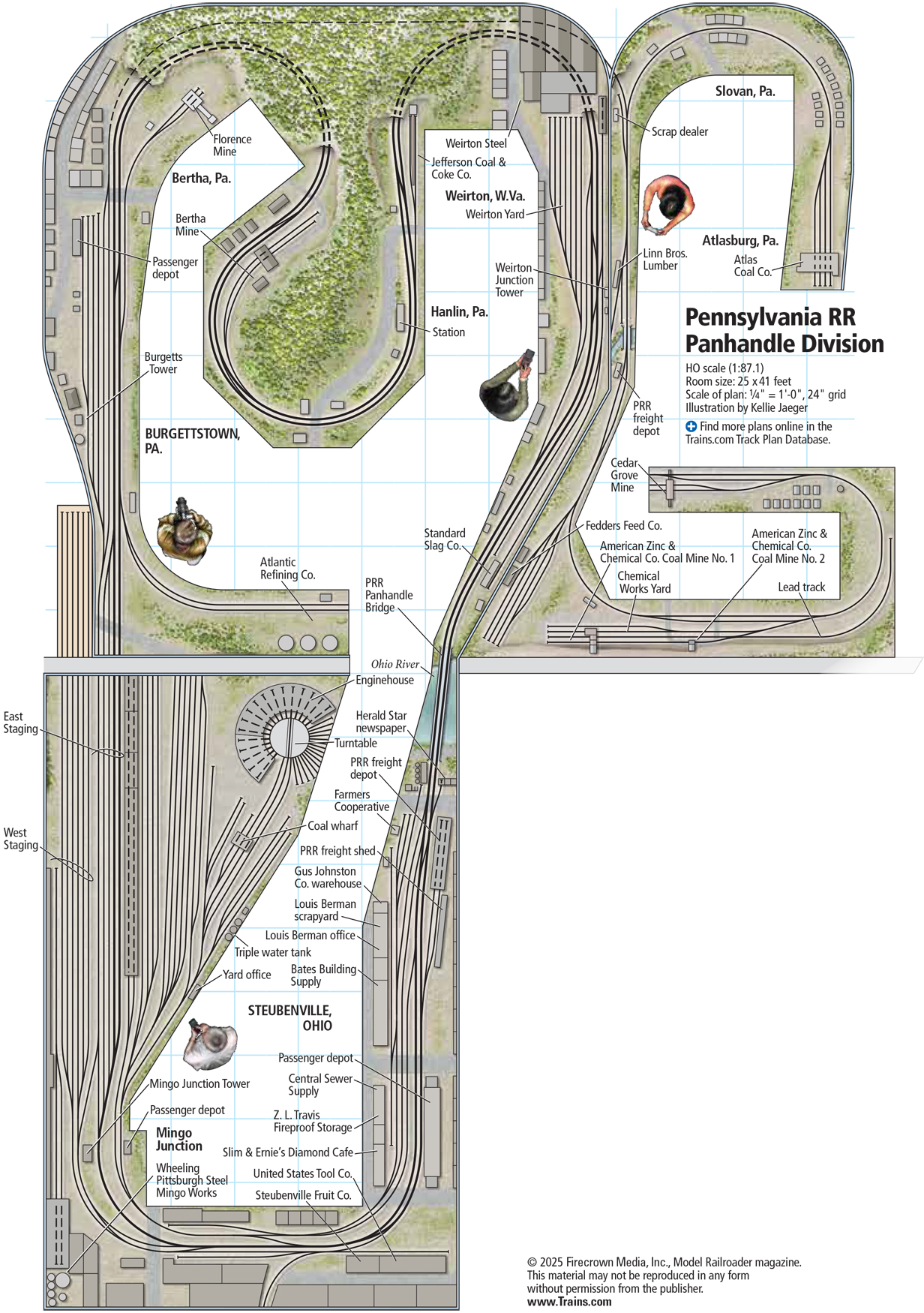Nearly four decades of touring model railroads have led me to conclude that 90 percent of layouts with scenery (and 100 percent of those without it) would benefit from more trees. This lack of trees may be due to the common belief that realistic models either cost a good deal of money or are too much time and effort to build.
My HO scale Cascade Pacific, a portable switching layout, sports scores of homemade conifers that were cheap, easy, and quick to make. But I was at a loss when it came to deciduous trees.
Since I only needed five or six of them, I decided to try an old technique that I expected to be tedious and time-consuming, even if inexpensive – twisting the armatures from wire. To my surprise, I found this turned out to be much quicker and easier than I anticipated. The photo above shows the results of a couple enjoyable hours at the workbench.
Bending the armatures
Begin by cutting a number of pieces of wire, all roughly the same length. For the Z scale tree I used 16 pieces, each about 2″ long. The large HO scale tree used 96 pieces, each 7″ in length. I also made a medium HO scale tree not shown in that picture; that armature took 32 pieces of florist’s wire, each about 5″ long.
Here’s the trick to this method that works for me: rather than beginning with a trunk of dozens of wires, start from the outermost tips of the branches and twist the wires together to form larger and larger limbs, ending with the trunk. Take two lengths of wire and lay one over the other to form an X, with the crossing about 1⁄2″ from one end. Then twist the wires around each other a few times, and lay the little branch aside. Repeat for most of the rest of the wires.
Next, take two of your twisted branches, lay one over the other to form another X shape, and twist these branches together to form a larger limb made of four wires, as seen in fig. 2. Do this repeatedly, twisting together smaller branches into larger and larger bundles, and before long you’ll have an armature like that in fig. 3.
I find it easy enough to twist together 32 of the strands of florist’s wire by hand without gloves, but many more than that becomes challenging. For the large armature in fig. 1, I made three small trees of 32 strands each. I then wrapped the three trunks together with another length of wire. Where I thought the base of the trunk should be, I separated out several groups of strands and twisted them together to form roots. I left the strands in the middle of the trunk to form a mounting stem, which I’ll poke into the scenery to hold the tree in place.
Barking up the right tree
Up until this point, while the wires are still uncoated, you can bend your tree branches any way you like to form a pleasing and natural-looking shape. When you’re happy with the shape of the armature, it’s time to brush on the goop that will form the bark of the tree.
The bark goop I use is made from three ingredients: full strength white glue, plaster, and powder paint. I’ve tried both regular plaster of paris and Durham’s water putty; either one works well. Whatever you use, the goop mixture needs to be thick enough to conceal the texture of the twisted wire strands.
The first coat will soak into the wire strands and turn dark as the white glue base hardens and becomes clear. It took two coats on the Z scale armature, three on the small HO scale tree trunk, and five or six on the largest to cover the twisted-wire texture.
After that dried overnight, I drybrushed the trunk with acrylic craft paints. I used Craft Smart brown (no. 23628) and tan (no. 23626), as well as Apple Barrel dolphin gray (no. 20781). At this point, you have a decent looking leafless tree that would go well in a winter scene, like the one seen in fig. 4.
Adding foliage
After stringing as many of these foliage nets on your tree as you wish, you can fix them in place with a coating of hair spray. I use the least expensive brand I can find that’s both unscented and especially tacky (the can I bought says “extra super hold”). This spray is also used to glue the “leaves” in place.
Get twisting!
This method is very versatile, and by varying the branch structure and bark color you should be able to represent many different types of trees, from ashes to willows. So what are you waiting for? Don’t you have several spots on your layout that could benefit from a rugged oak or a lithe sycamore?
Various
30AWG florist’s wire
Hair spray
Plaster
Black powder paint
Acrylic craft paints
White glue
Woodland Scenics
Poly Fibre, green
Fine turf, assorted colors





